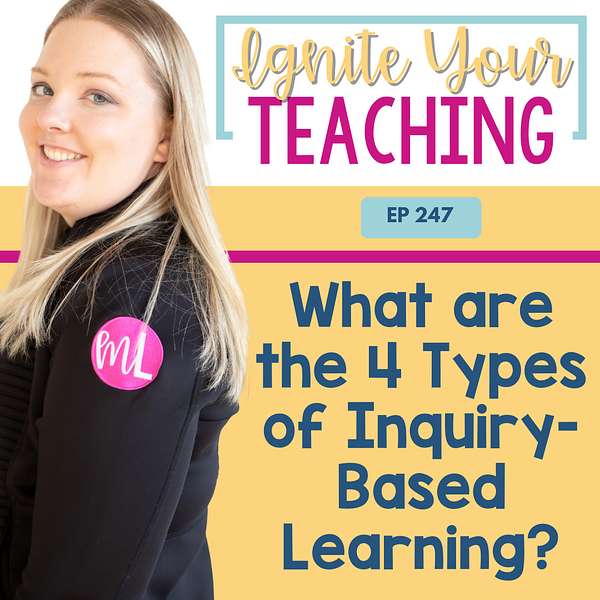
Ignite Your Teaching
Ignite Your Teaching
247: What are the 4 Types of Inquiry-Based Learning?
Are you struggling to include inquiry-based learning in your classroom? Understanding how to implement it can be challenging, especially for teachers with a range of abilities in their classrooms.
Inquiry is not just an open-ended free-for-all, but rather it is about empowering students to ask questions and guiding them through the process of discovering answers.
In this episode, we discuss the following:
· The four types of inquiry-based learning
· How they're different
· How they're the same
· How there is a type of inquiry that all students can participate in
As teachers, we may have focused on getting through the curriculum during the pandemic, but now is the time to address the gap in our student's ability to use critical thinking skills to learn.
4 Types of Inquiry-Based Learning
1. Structured Inquiry - This form of inquiry-based learning has a lot of teacher support. It follows predetermined steps that allow students to explore and discover things they are learning in a very structured, linear way.
2. Guided Inquiry - This form of inquiry-based learning has a high level of teacher support and scaffolds students through each step of the inquiry process while allowing some students to follow different paths.
3. Problem-Based Inquiry - In this form of inquiry-based learning, students start with a problem and try to come up with solutions to solve that problem. The teacher provides strategies, tools, and parameters, but students are free to explore and experiment with different solutions and draw conclusions based on their results.
4. Open-Ended Inquiry - In this form of inquiry-based learning, students are free to pick a topic that interests them and explore it independently, with the teacher providing minimal guidance.
Through inquiry-based learning, students are empowered to ask questions, become problem solvers, and engage in critical thinking, which are essential skills for success in the workforce.
Join us as we dive into this critical topic and explore how you can use the four types of inquiry-based learning in the classroom today.
Remember to Subscribe for more insights on how to navigate the complexities of teaching with efficiency and impact. Share your experiences and strategies in the comments to join the conversation with fellow educators.
To find our highly effective, time-saving resources
Checkout our Madly Learning Store at www.madlylearning.com/store
Checkout our Teachers Pay Teachers store
Join our FREE Facebook community for teachers here: https://bit.ly/IYT-FB
